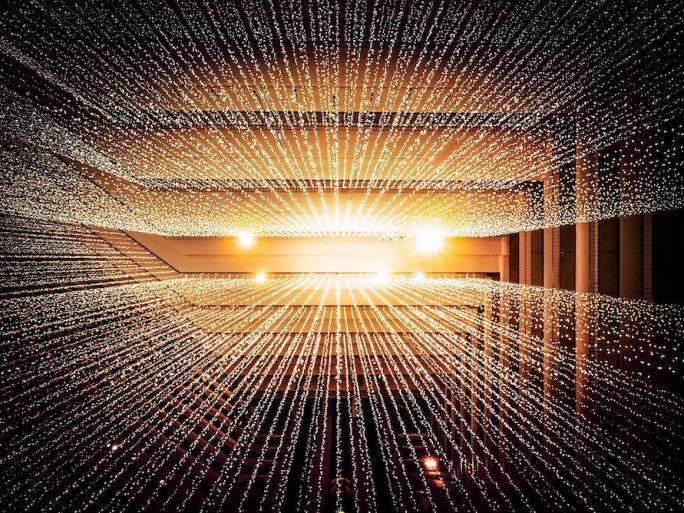Researchers in China have claimed the achievement of quantum supremacy, with a quantum computing system able to vastly outperform the fastest conventional supercomputers.
China’s leading quantum research group said in the journal Science last week that its Jiuzhang system had carried out a calculation in just over 3 minutes that would have required Sunway TaihuLight, China’s fastest supercomputer and the world’s third fastest, more than 2 billion years to complete.
The achievement comes a year after Google’s Sycamore quantum prototype became the first to claim quantum supremacy, completing a calculation in minutes that would have taken an estimated 10,000 years for a conventional supercomputer.
The system developed by a team at the University of Science and Technology of China in Hefei operated almost 100 trillion times faster than existing supercomputers, the team estimated.
 Photon-based system
Photon-based system
Lu Chaoyang, a physics professor who worked on the USTC experiment, said his team’s system operates by manipulating photons, or particles of light, in contrast to Google’s computer, which used ultra-cold superconducting chips.
China’s Xinhua official news agency said the Chinese system operated about 10bn times faster than Google’s Sycamore.
Lu called the milestone “a necessary step” toward a “large-scale fault-tolerant quantum computer”, adding that the team’s system “can only do a specific job, not all jobs. It is not fully programmable yet. This is something we are working on.
“Scientists are close to useful quantum machines that can do something non-trivial,” Lu added.
The systems used by Google and USTC have respective benefits, with Google’s semiconductors being more programmable, but requiring the use of ultracold refrigerators to maintain the system at fractions of a degree above absolute zero.
Breakthrough
The USTC computer, meanwhile, comprised of lasers, mirrors, prisms and photon detectors, is not as easily reprogrammable as Google’s approach, although the team said it is working on larger and more flexible versions.
The two systems are different approaches to the same goal, the use of quantum effects to create systems that could in theory be exponentially more powerful than today’s computers.
One possible use for this computing power being explored by researchers is quantum cryptography, which could in theory lead to virtually uncrackable encryption.
In March, for instance, a team of researchers headed by the University of Glasgow recorded a breakthrough in the development of quantum-enhanced optical systems that it said could be applied to the quantum key distribution, a key element of quantum cryptography.





